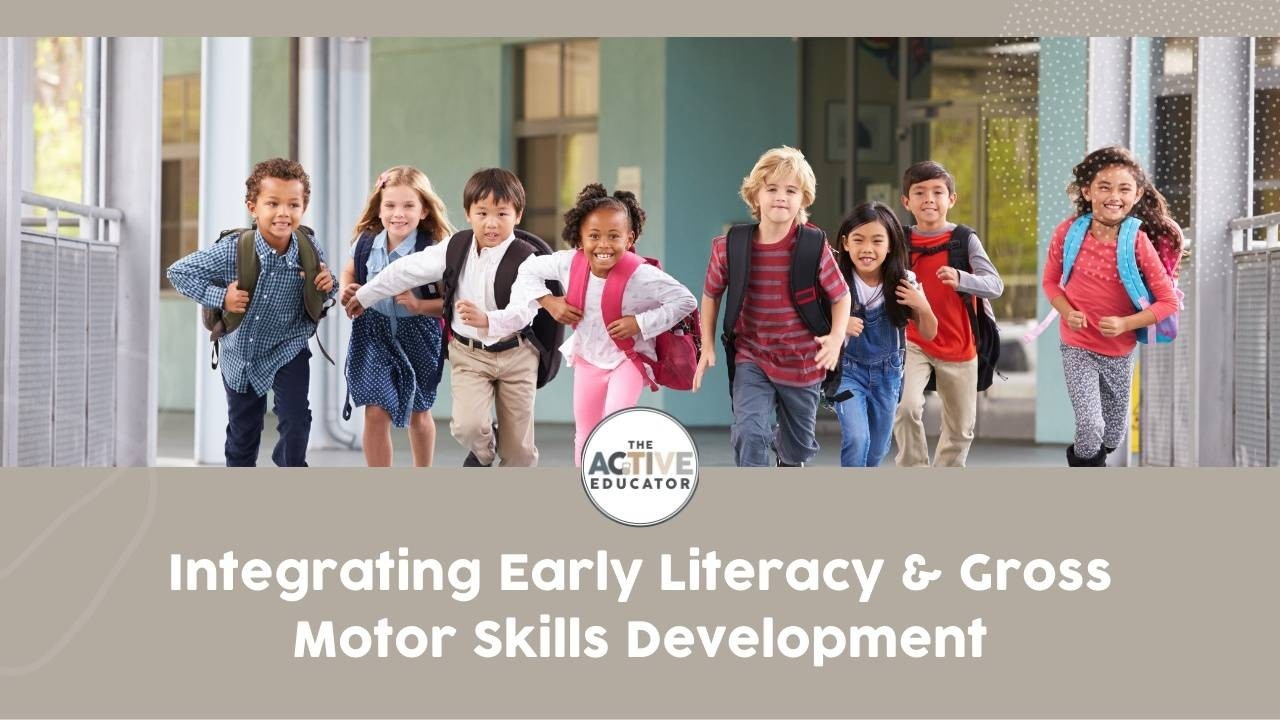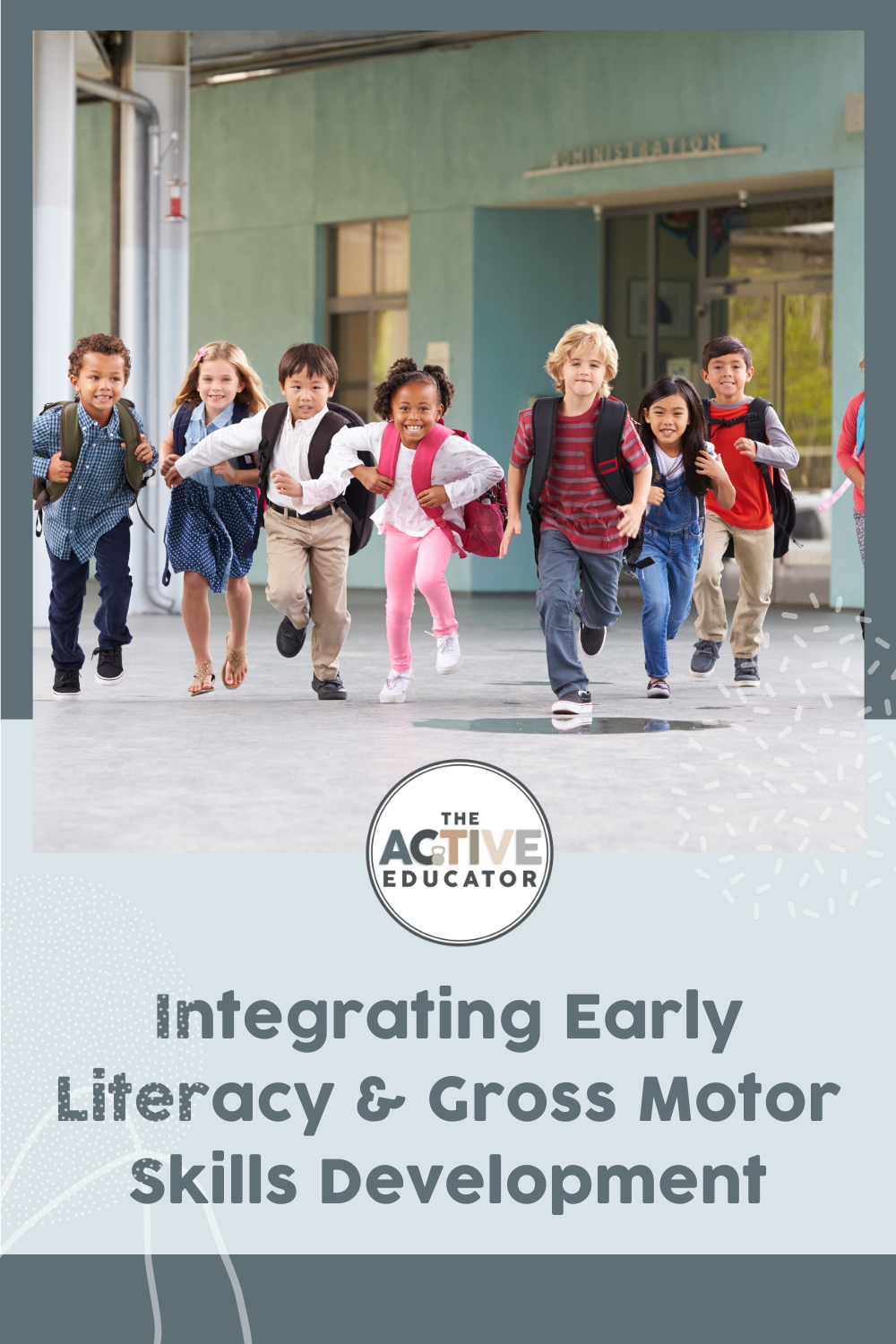Integrating Early Literacy & Gross Motor Skills Development

The early years are the perfect time to support the physical activity of children in conjunction with early literacy skills. There is a ton of research and evidence that shows there is a need for integrating gross motor with early literacy. With that being said, it is super important to find ways to routinely incorporate physical activity in our young learners during literacy time. And what better way to do that than to start incorporating gross motor activities into the daily classroom routine?!
What does the research say?
Unfortunately, many early learners are not engaging in as much activity that helps develop their gross motor skills. In addition, research supports that there is a strong connection when teachers are able to bring movement into daily literacy activities. Students are more engaged, willing to participate and ultimately, make stronger connections. Because of this, it is important that educators find creative ways to integrate movement into daily activities. The combination of both reading and movement-based activities will increase engagement and retention of important literacy skills! This will be extremely beneficial as your little readers begin embarking out with texts independently.
Ways to incorporate movement with literacy
Read alouds
Read alouds are a common practice in most early literacy programs. This is a perfect and easy way to start incorporating movement into your regular routines. By selecting books that also incorporate movement, students will be able to grasp those foundational skills that you address through read alouds. They will also be able to engage with the movement and make stronger connections to the concepts being taught. Some great interactive and movement-based books include Move! by Robin Page, Hop, Skip, and Jump Maisy by Lucy Cousins, From Head to Toe by Eric Carle and Jump! by Steve Lavis.
CVC Words and Gross Motor
I did an entire blog post about my favorite ways to incorporate movement when teaching CVC words and vowel sounds. My students love these movement-based activities and I can see the connections being made when we switch it up from traditional literacy tasks. You can check out that blog post here!
Quick, easy, no-prep movement ideas
These next few ideas can be easily added to your classroom with little to no prep required. If you are singing songs to learn new skills (counting, ABCs, etc) have your students get up and move to the beat. You can also have students move around to answer a question. Each corner of the room can be a choice, word, etc. This is great for whole group assessment as well! Lastly, you can practice segmenting and blending CVC words by tossing a ball from one person to the next, jumping for rhyming words or making letter sounds with their bodies. If you’re looking for more no prep movement activities for early literacy skills, this Early Literacy Fun Pack is perfect! These print-and-go tap mats are a wonderful tool when it comes to teaching your littles how to read and write!
In early literacy classrooms where gross motor movement is integrated, students are engaged, they retain knowledge better, and they love learning! If you can start to integrate gross motor activities in your classroom, you will start to see so many of the benefits that I have seen with my students! Now, let’s get moving and learning together!



